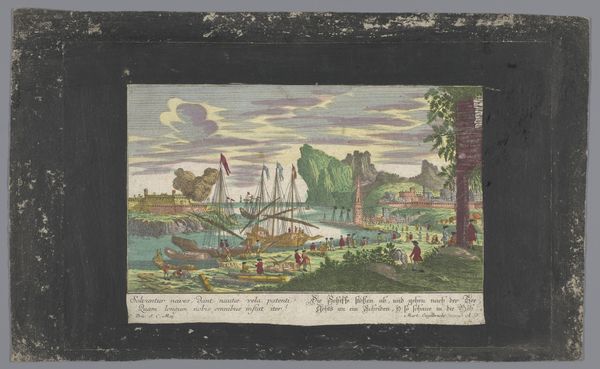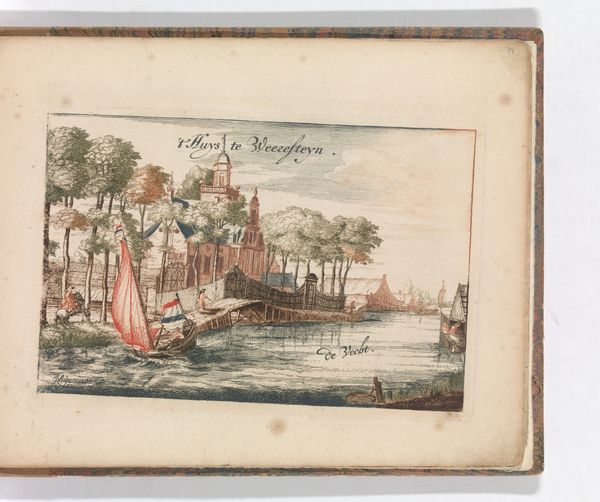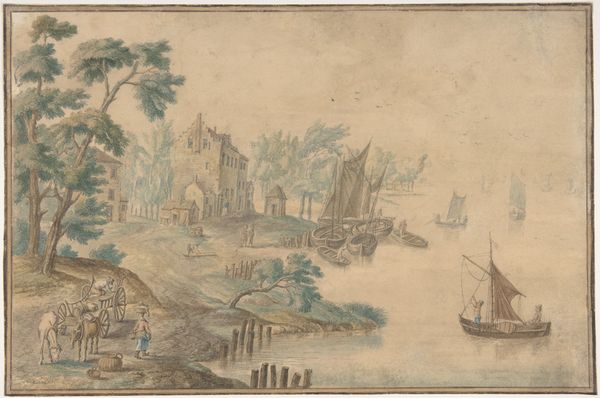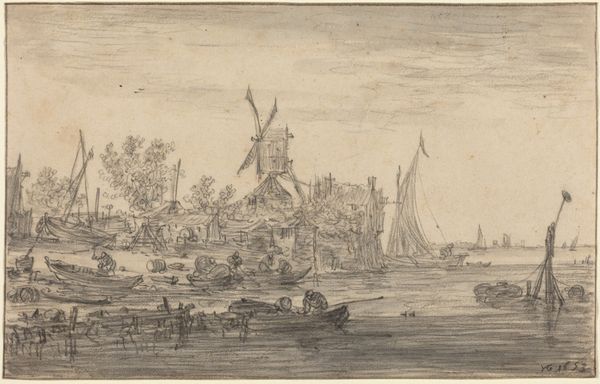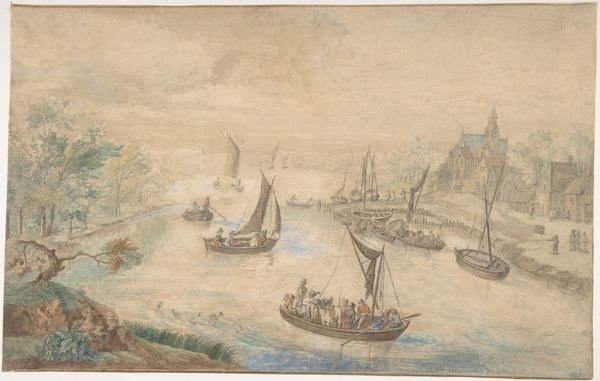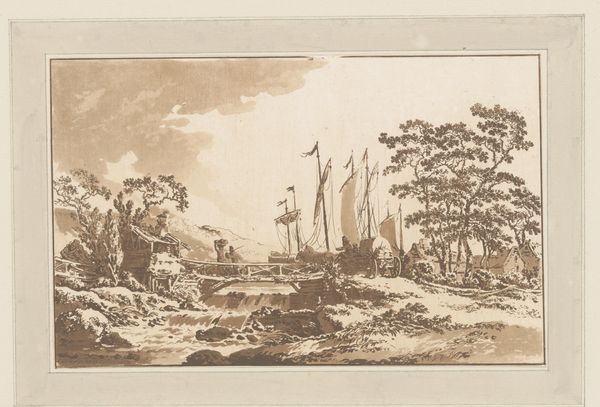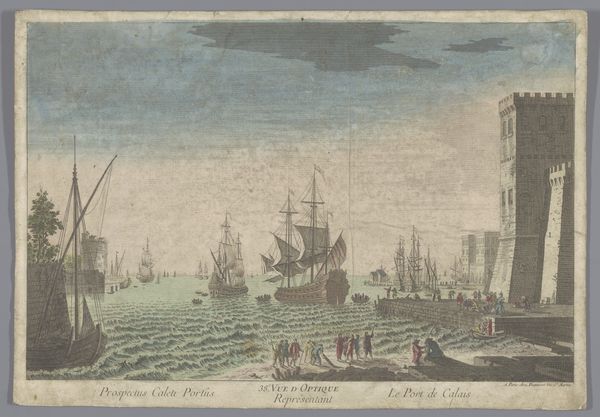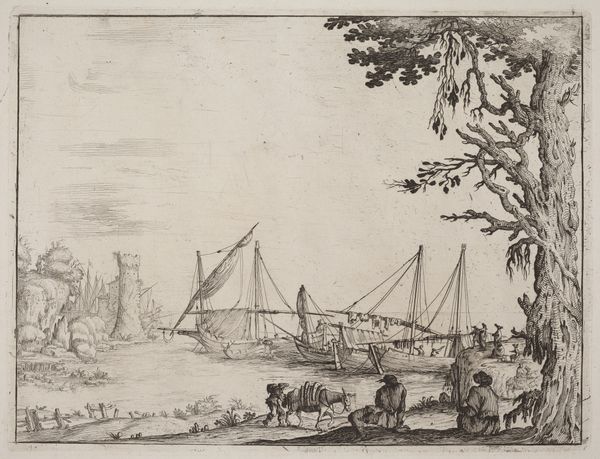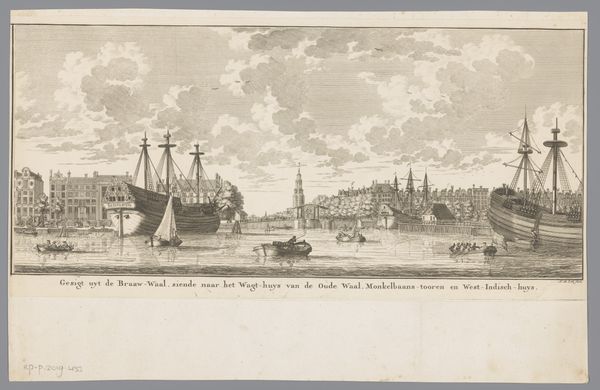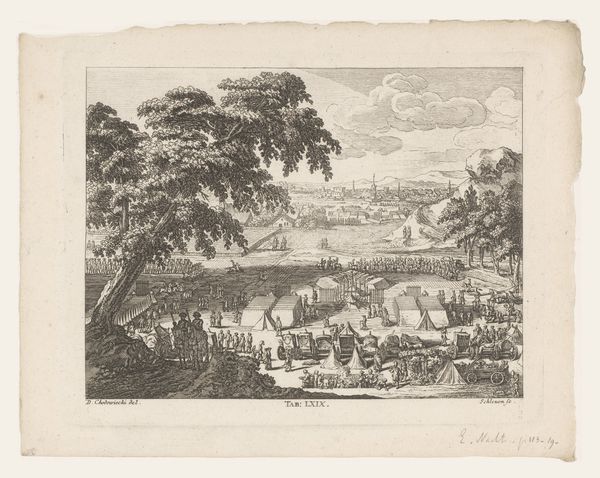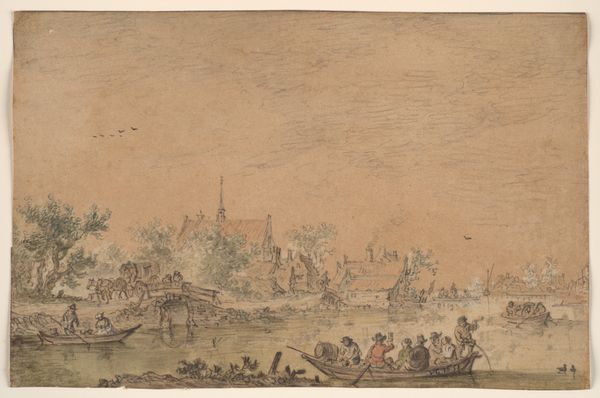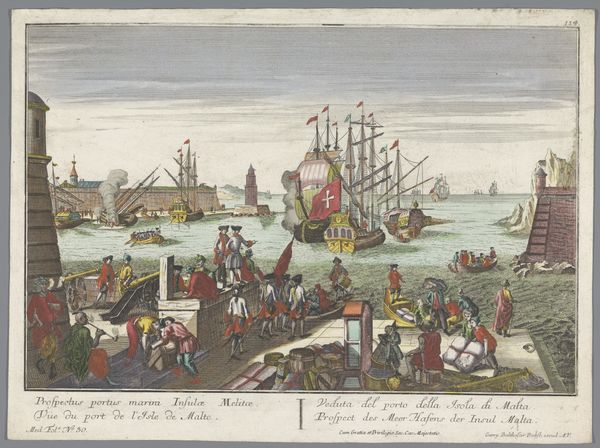
painting, print, watercolor, engraving
#
water colours
#
painting
# print
#
landscape
#
watercolor
#
coloured pencil
#
cityscape
#
genre-painting
#
engraving
#
rococo
Dimensions: height 260 mm, width 447 mm
Copyright: Rijks Museum: Open Domain
Curator: The initial impression is just charming; there's a tranquility despite all the activity depicted. The light palette creates such a gentle mood. Editor: Indeed. What we have here is "View of Moored Ships and a Shipyard" by Martin Engelbrecht, believed to have been created sometime between 1708 and 1756. It's part of the Rijksmuseum collection, a work combining engraving, watercolor, and colored pencil on paper. What I find fascinating is the glimpse into early 18th century maritime infrastructure and the lives connected to it. Curator: Exactly! I see this artwork as reflective of the societal relationship between the city, sea, and the individual at that time. How maritime settings, especially the activities on shipyards and the life near harbors, were the embodiment of international connection. But at the same time, in that picture we also see a glimpse into colonial times with everything they implicate. Editor: I agree completely. It highlights the economic engines of the era and reminds us of the deep entanglement of trade, colonialism, and everyday life. The detailed rendering of the ships, the various figures engaged in labor, and the architectural backdrop are important social markers. The artist's focus is clearly on communicating a sense of bustling commerce. Curator: Right! Look closely: how are the figures on the canvas portrayed? Who are these people; merchants or craftsmen, dock workers, enslaved people, soldiers, civilians or their families, or travellers? What does it tell us about mobility, class structures and gender in that era, and about how labor and identity interact? We are provided only a snapshot, not a full portrait. Editor: This piece exemplifies the Rococo style with its decorative charm, which presents a vision of maritime life that surely shaped both how its contemporaries saw the docks, and how we analyze them today. Engelbrecht presents this with a focus on aestheticizing reality to suit a particular viewpoint. Curator: I wonder though, what narrative is being intentionally left out of this representation? How does it skew or validate power structures that persisted? Editor: That's a crucial question and brings forward some of its original social and cultural framework, certainly. I think understanding the role these images played within broader socio-economic power dynamics gives us a more accurate reflection on how it influences perceptions even today. Curator: Exploring it further allows us to reframe historical understanding to the perspective and the contribution from different population groups. Editor: Definitely, a thoughtful exploration can bring an entirely novel, present-day view into an historical artwork like this.
Comments
No comments
Be the first to comment and join the conversation on the ultimate creative platform.
